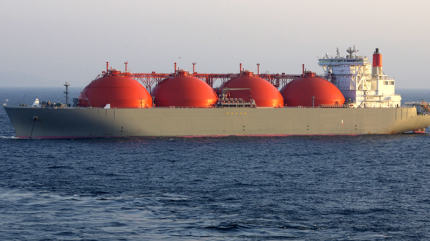
Australian LNG producers could be running into tough times as global demand for the energy source peaks and oversupply starts to hit world markets.
According to an IEEFA report, between 2024 and 2028 global LNG supply will increase by an unprecedented 40%.

Discover B2B Marketing That Performs
Combine business intelligence and editorial excellence to reach engaged professionals across 36 leading media platforms.
This is due in part to increasing capacity additions from the US and Qatar, two nations that are able to produce gas at a much lower cost than Australia.
Concurrently, demand for LNG is starting to decline in mature markets. IEEFA predicts that European demand for LNG will peak in 2025, and then decline.
Japan’s LNG demand has decreased by 25% since 2014 and is expected to fall by a further 25% by 2030 as LNG is replaced with resurgent nuclear output and renewable energy. South Korea’s LNG imports fell by 5% last year and are expected to fall further by 2030.
Australian LNG producers could make up for this lost demand by exporting to emerging Asian markets. However, IEEFA points out that due to often high and volatile prices, and the associated fiscal challenges, the appetite of emerging Asian markets for Australian LNG is limited.

US Tariffs are shifting - will you react or anticipate?
Don’t let policy changes catch you off guard. Stay proactive with real-time data and expert analysis.
By GlobalDataMany of the Australian producers currently sell their LNG through long-term contracts, but a large share of these will start expiring after 2030. They will therefore be increasingly exposed to low-cost competition.
As of July 2023, around 75% of Australian-produced LNG is exported, primarily to markets in Asia.
The energy industry also faces the additional problem of a possible large glut in global oil supplies. The International Energy Agency recently predicted that global oil capacity in 2030 will exceed demand by eight million barrels per day.
Most Australian LNG contracts have pricing directly linked to oil prices.
Amandine Denis-Ryan, CEO of the IEEFA’s Australia team and author of the report, said that the “double oil and LNG supply gluts are really a double whammy for the Australian LNG industry, which now faces an ever-gloomier future”.





